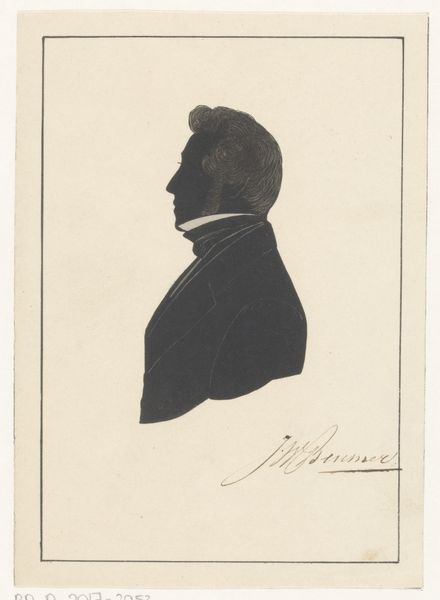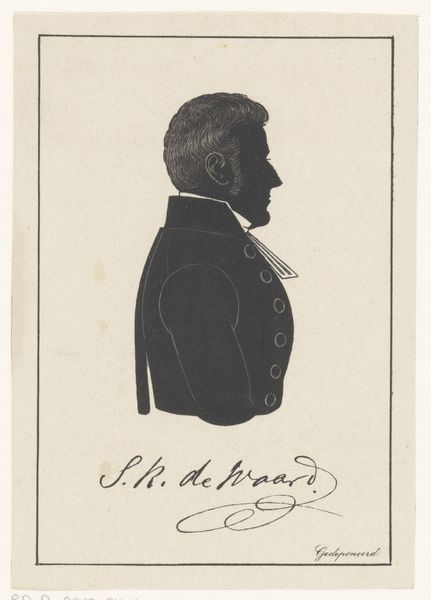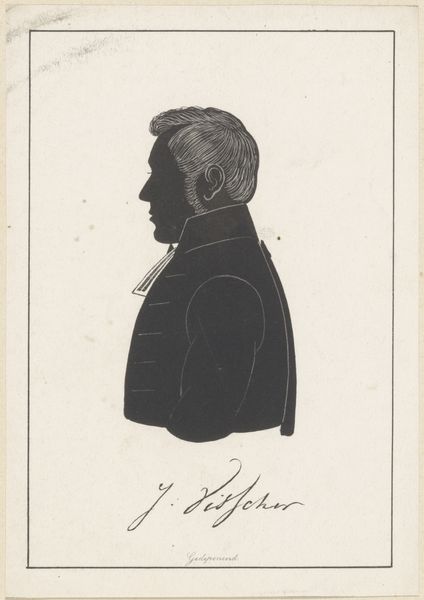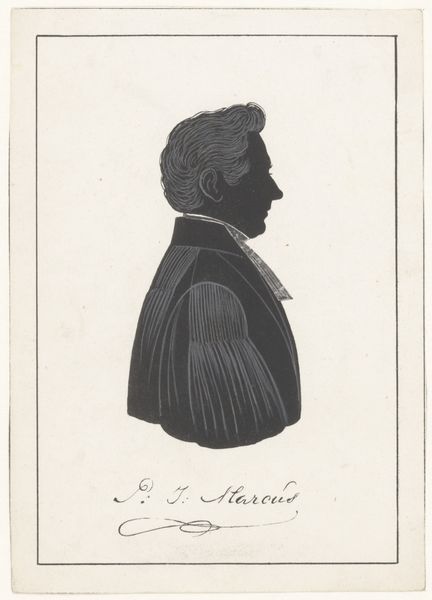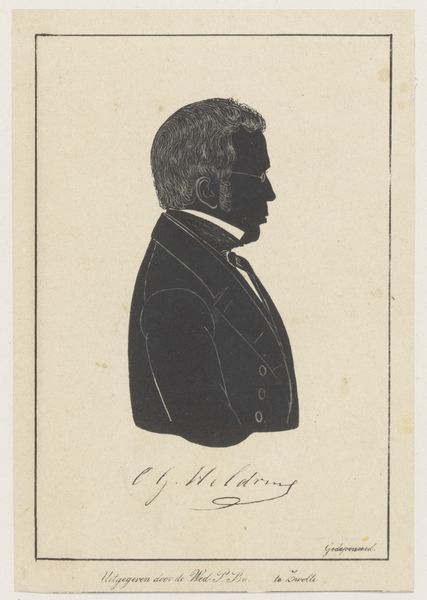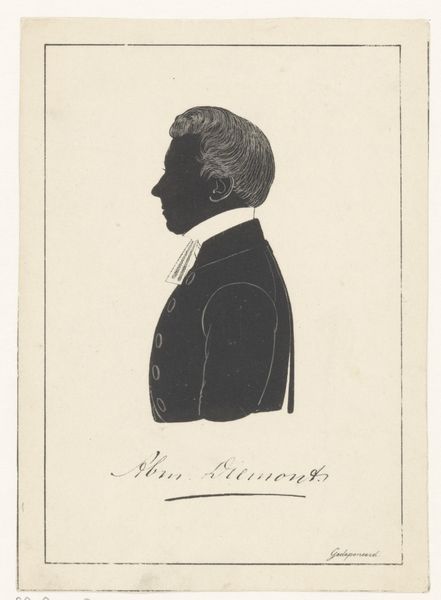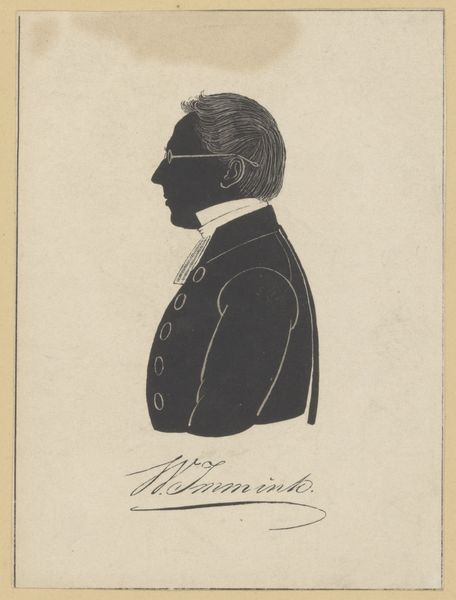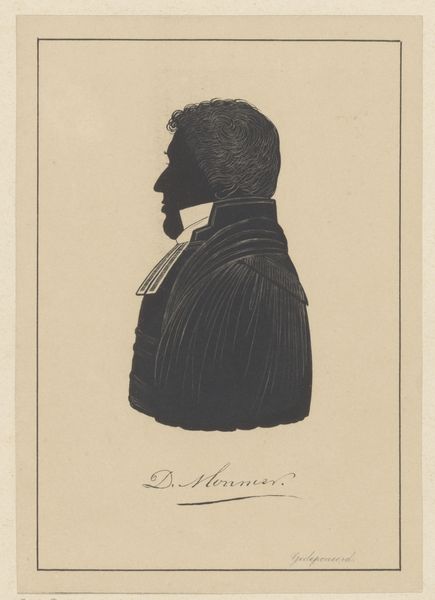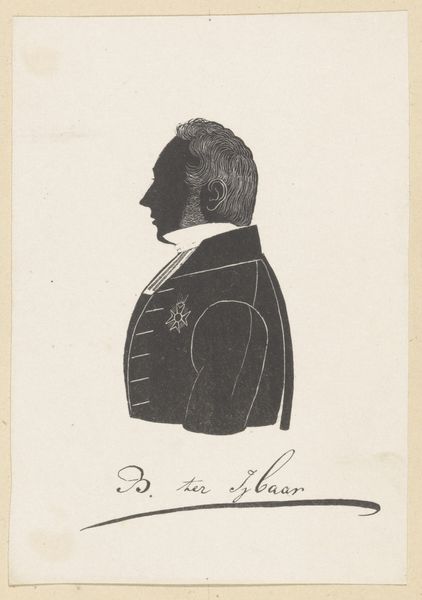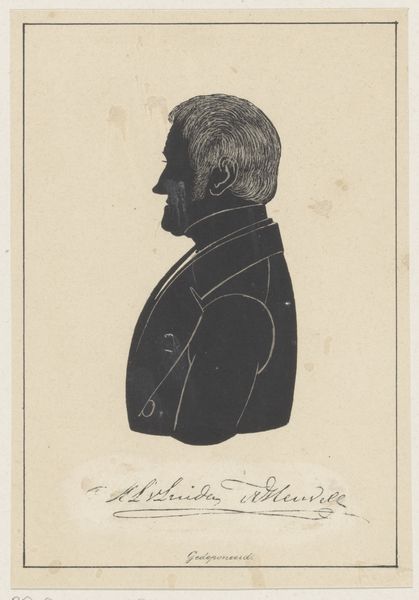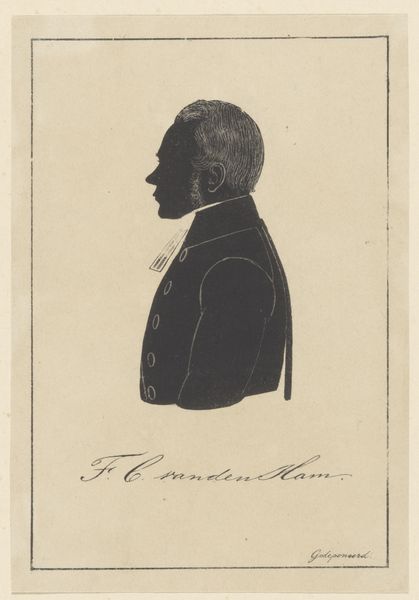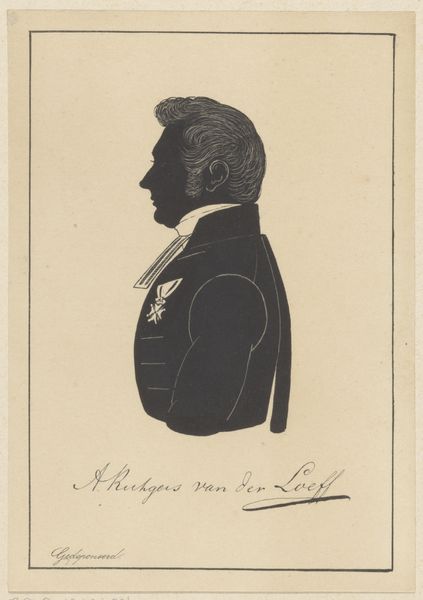
drawing, paper, pencil, graphite
#
portrait
#
drawing
#
old engraving style
#
caricature
#
paper
#
pencil
#
graphite
Dimensions: height 151 mm, width 108 mm
Copyright: Rijks Museum: Open Domain
Editor: This is a graphite drawing, a silhouette portrait of Willem Carel Mauve by Pieter Barbiers the Fourth, created sometime between 1809 and 1848. It feels almost like a caricature, stripping the subject down to just an outline, but still somehow conveying information. What do you see in this piece? Curator: It’s fascinating how a silhouette, such a reduction of form, can still hold so much information. In this stark portrayal, the sharp contrast evokes the starkness of moral judgment prevalent at the time. Do you see how the very act of creating a silhouette is, in itself, an act of reduction, simplifying a person to their most essential form? Editor: Yes, I do. Almost like trying to find the "true" essence by removing the superficial. So the details that *are* included – the collar, the hair – become even more significant, right? Curator: Precisely! The meticulously rendered hair, juxtaposed against the severe jacket and collar, could signify the tensions between societal expectations and individual identity. Think about how hair has been symbolically loaded throughout history. Does that change the reading for you? Editor: Definitely. It makes me consider what details were deemed important enough to capture. And also, maybe, what aspects of identity they chose to project. Curator: That's right. Silhouette portraits gained popularity during this period as a quicker, cheaper alternative to painted miniatures, offering a glimpse into the democratisation of image-making, allowing a wider range of society to participate in portraiture. It speaks to accessibility and the broader shifts in identity. It’s almost haunting, isn't it? Editor: It really is. I never thought a silhouette could hold so much cultural weight. Thanks, I will carry that in mind.
Comments
No comments
Be the first to comment and join the conversation on the ultimate creative platform.
